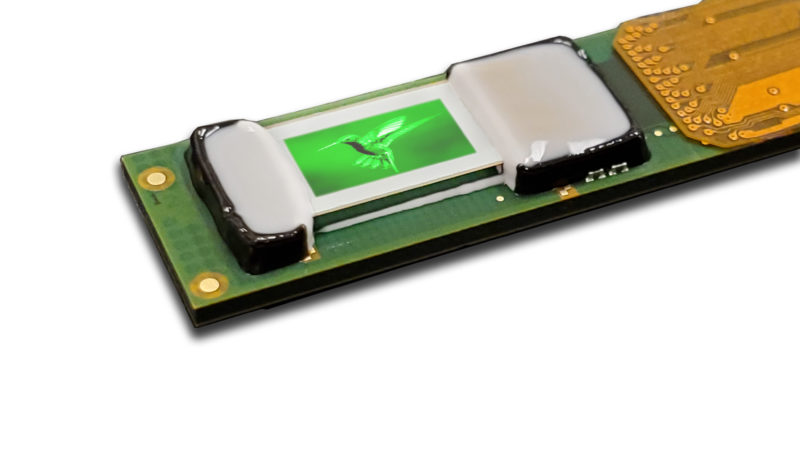Compound Photonics and Plessey Semiconductors announced the results of their collaboration, the first fully addressable Micro LED display modules.
Engineering teams from both companies have fabricated functional Micro LED display modules combining CP’s high speed digital low-latency display backplane with Plessey’s GaN-on-Silicon monolithic Micro LED array technology. Plessey produced the Micro LED array wafer bonded to CP’s backplane wafer at its facility in the UK. In turn, CP’s team assembled and packaged display modules from the bonded wafer pair in the USA. And now they are both working on performing initial characterization work at CP’s facility in Washington, USA.


(Plessey and CP's 0.26-inch Micro LED display module)
Plessey and CP announced their strategic partnership in October 2019 with the aim to combine microdisplay system and Micro LED technology. Now they reported the functioning Micro LED prototypes through successfully bonding Plessey’s GaN-on-Si Micro LED array wafer to CP’s high-performance 3.015 µm pixel 1080p Backplane wafer and subsequent process steps to create Micro LED display modules from the bonded wafers.
Initial samples of a 0.26 inch diagonal, Full HD 1080p resolution Micro LED display module integrated with display driver IC and MIPI input are expected to be available by summer of 2020.
Mike Lee, President of Corporate and Business Development at Plessey, commented, “Today’s milestone achievement is a direct result of the close working relationship between Plessey and CP development teams. This successful proof-of-concept demonstration validates both companies’ goals to produce the industry’s highest performance Micro LED display modules that deliver improved brightness at the smallest pixel sizes, higher frame rates, with extended bit depth at the lowest power consumption to best serve next-generation emissive display based AR/MR smart glasses and Heads-Up/Head-mounted displays (HUD/HMDs) applications.”





 CN
TW
EN
CN
TW
EN







